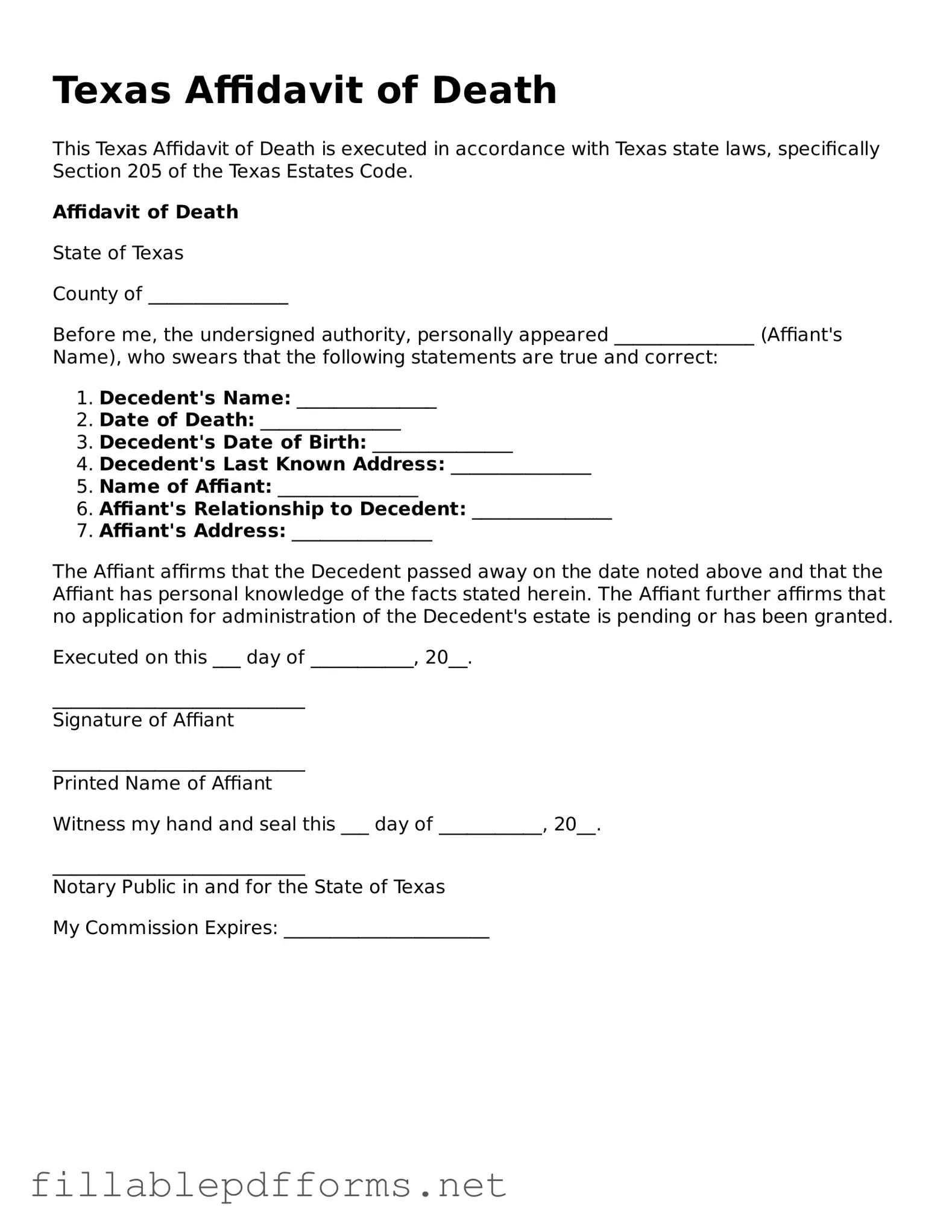In the state of Texas, the Affidavit of Death form serves as a crucial document for individuals navigating the complexities of estate management and property transfer following the death of a loved one. This form is particularly significant as it provides a legal declaration that confirms the passing of an individual, thereby facilitating the resolution of their estate. It is often utilized when the deceased left behind property that needs to be transferred to heirs or beneficiaries without the need for a formal probate process. The affidavit typically includes essential information such as the deceased's full name, date of death, and details about the relationship between the affiant—the person making the declaration—and the deceased. Additionally, the document may require the signature of a notary public to ensure its authenticity and legal standing. Understanding the nuances of this form can empower individuals to effectively manage the affairs of the deceased, ensuring that their wishes are honored and that the transition of assets is handled smoothly.
